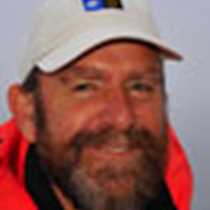Hornstrandir and Isafjord, West Fjords, Iceland
We were late to bed last night after an unforgettable evening among great whales. From the herring halls of Siglufjörður we had set course west, but during dinner Richard's sharp eyes sighted whales on the horizon: golden plumes backlit by the westering sun. Whales, whales and more whales , dolphins scything between and above them a swirling cloud of gulls like midges over a gilded lake. Tim gave the word, and we took to the Zodiacs. Humpback whales, dozens scattered across the sea, trumpeting like elephants as they surfaced, glistening backs flexing as tails arched for the dive. Around us flotillas of guillemots bobbed, kittiwakes plunged and squabbled over the briny banquet, and we drifted in wonder among the gentle giants as they gorged. It was a vision of Eden: how the ocean must have been before wonder turned to plunder.
After a few hours of sleep we woke to the soaring cliffs of Hornbjarg, part of the rugged cockscomb of Iceland they call the West Fjords. Grey buttresses spattered with white polka dot kittiwake colonies. Wispy waterfalls falling a thousand feet into the sea. And everywhere guillemots, darting into the depths for food, paddling across puckered waters, and streaming single file into their red-rimmed ledges on the green cliffs.
Our morning landfall was in Fljótavík, a remote bay ringed by snow-streaked mountains. Some took to the kayaks to paddle the southern edge of the bay, others took to the hills for views across valleys gouged by glaciers. Others meandered up from the black sand beach, through dunes crisscrossed by the tracks of arctic fox, over fossil beaches to muddy pools where tiny ringed plovers pattered over the footprints of whooper swans. A few summer houses remain here where, 60 years ago, men still farmed the narrow fertile terraces in the shadow of snowy mountains, their only access, the way we had come, from the sea. After lunch we landed on the grassy island of Vigur where they harvest eiderdown: within feet of the jetty, eider ducks sat with Zen-like calm, unperturbed by boots, voices or cameras. Puffins and terns, coffee and cake, and a memorable trip punching our way back through lively swells to the ship.
And to complete our exploration of the West Fjords, a region unsullied by tarmac, we anchored in a sheltered fjord and went ashore to visit Hesteyri, a village which grew with the whaling and died in 1952 when the herring stocks crashed. We walked past the cemetery to a rushing glacial waterfall, then down to one of the restored houses, where we were treated to coffee, local pancakes and the poignant songs of our hostess, whose grandparents once lived here year-round. Now Hesteyri is history. How ironic that here, in the remote northwest of Iceland, the people have left, but the whales have returned.
We were late to bed last night after an unforgettable evening among great whales. From the herring halls of Siglufjörður we had set course west, but during dinner Richard's sharp eyes sighted whales on the horizon: golden plumes backlit by the westering sun. Whales, whales and more whales , dolphins scything between and above them a swirling cloud of gulls like midges over a gilded lake. Tim gave the word, and we took to the Zodiacs. Humpback whales, dozens scattered across the sea, trumpeting like elephants as they surfaced, glistening backs flexing as tails arched for the dive. Around us flotillas of guillemots bobbed, kittiwakes plunged and squabbled over the briny banquet, and we drifted in wonder among the gentle giants as they gorged. It was a vision of Eden: how the ocean must have been before wonder turned to plunder.
After a few hours of sleep we woke to the soaring cliffs of Hornbjarg, part of the rugged cockscomb of Iceland they call the West Fjords. Grey buttresses spattered with white polka dot kittiwake colonies. Wispy waterfalls falling a thousand feet into the sea. And everywhere guillemots, darting into the depths for food, paddling across puckered waters, and streaming single file into their red-rimmed ledges on the green cliffs.
Our morning landfall was in Fljótavík, a remote bay ringed by snow-streaked mountains. Some took to the kayaks to paddle the southern edge of the bay, others took to the hills for views across valleys gouged by glaciers. Others meandered up from the black sand beach, through dunes crisscrossed by the tracks of arctic fox, over fossil beaches to muddy pools where tiny ringed plovers pattered over the footprints of whooper swans. A few summer houses remain here where, 60 years ago, men still farmed the narrow fertile terraces in the shadow of snowy mountains, their only access, the way we had come, from the sea. After lunch we landed on the grassy island of Vigur where they harvest eiderdown: within feet of the jetty, eider ducks sat with Zen-like calm, unperturbed by boots, voices or cameras. Puffins and terns, coffee and cake, and a memorable trip punching our way back through lively swells to the ship.
And to complete our exploration of the West Fjords, a region unsullied by tarmac, we anchored in a sheltered fjord and went ashore to visit Hesteyri, a village which grew with the whaling and died in 1952 when the herring stocks crashed. We walked past the cemetery to a rushing glacial waterfall, then down to one of the restored houses, where we were treated to coffee, local pancakes and the poignant songs of our hostess, whose grandparents once lived here year-round. Now Hesteyri is history. How ironic that here, in the remote northwest of Iceland, the people have left, but the whales have returned.




